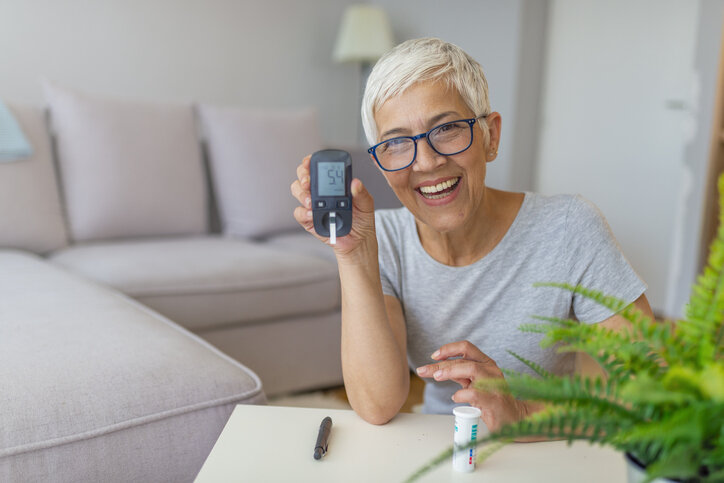Fight diabetes with physical activity
/Fight diabetes with physical activity
A diagnosis of type 2 diabetes is a wakeup call to taking better care of yourself. One way to accomplish this is through physical activity or exercise. Increasing movement throughout the day will lead to feeling better and best news of all, reduces the risk of common complications associated with diabetes such as problems with your kidneys, feet, nerves, eyes and heart.
What will physical activity do for someone with diabetes?
Physical activity plays an important role not only in managing type 2 diabetes better but also can help prevent diabetes to begin with. A modest weight loss of 5 to 7 percent – about 10 to 15 pounds for a 200-pound person – can delay and possibly prevent type 2 diabetes. Research has shown physical activity can do the following:
· Lower blood glucose and blood pressure
· Lower bad cholesterol (LDL) and raise good cholesterol (HDL)
· Improve the body’s ability to use insulin
· Lower risk for heart disease and stroke
· Keep the heart and bones strong
· Keeps joints flexible
· Lowers risk of falling
· Helps with weight loss
· Reduces body fat
· Increases energy levels
· Reduces stress
What types of physical activity can help?
There are four kinds of activity that can help:
1. Do extra activity. Each day find ways to do extra movements or activity to help increase the number of calories burned.
· Walk around while talking on the phone
· Plays active games with your kids or grandkids
· Take the dog on a walk
· Work in the garden
· Clean the house
· Take stairs instead of an elevator
· Stretch or walk around during a break at work
2. Do aerobic exercise. Aerobic exercise requires the use of large muscles and makes the heart beat faster. Work up to at least 30 minutes a day for most days of the week. If it’s been awhile since exercising, always have it approved by a physician first to make sure it’s ok to increase physical activity.
· Walk briskly
· Hike
· Climb stairs
· Swim or take a water-aerobics class
· Dance
· Ride a bike outdoors or a stationary bike indoors
· Take an aerobics class
· Play tennis
3. Do strength training. Lifting hand weights or using weight machines will build and retain muscle mass. Having more muscle and less fat means more calories burned even when resting. Strength training improves balance and coordination, makes daily chores easier, and improves bone health. Strength training can be done at home or work with a personal trainer for correct form.
4. Do stretching. Stretching will increase flexibility, lowers stress, and helps prevent muscle soreness. Try to stretch each day to achieve maximum benefits.
Are there any types of physical activity that shouldn’t be done?
A person with diabetes who is having complications may need to avoid certain exercises so as not to harm or injure themselves. For instance, lifting heavy weights can increase the pressure in the blood vessels of the eyes possibly making diabetic eye problems worse. If there is numbness in the feet indicating nerve damage, swimming may be a better option instead of walking for aerobic exercise.
Can physical activity cause low blood glucose?
Low blood glucose is called hypoglycemia and may occur in people taking insulin or certain types of medications. Low blood sugar can happen while exercising and may cause feelings of shakiness, weakness, confusion, feeling grumpy, hungry, sweating, or tired.
Exercise is still important but there are steps to take to prevent hypoglycemia:
· Before exercise, ask your healthcare team if you should be checking your blood glucose.
· During exercise, wear a medical identification bracelet or necklace or carry make sure to carry ID. Always carry food or glucose tablets in case hypoglycemia occurs. If the exercise will last more than an hour, check blood glucose and carry food in case blood sugar drops.
· After exercise, check blood glucose levels to see how exercise affected it.
How to stay and keep active
Exercise and physical activity are important ways in managing diabetes. The key is to stay on track in making exercise and physical activity a regular habit. Find activities you enjoy. If you find yourself making excuses to not exercise, think about why. Do you need to change the activity, is there another time that is more convenient? Keep trying until you find a routine that works for you. Once it’s a habit, you won’t want to do without it.
Dr. David Samadi is the Director of Men’s Health and Urologic Oncology at St. Francis Hospital in Long Island. He’s a renowned and highly successful board certified Urologic Oncologist Expert and Robotic Surgeon in New York City, regarded as one of the leading prostate surgeons in the U.S., with a vast expertise in prostate cancer treatment and Robotic-Assisted Laparoscopic Prostatectomy. Visit Dr. Samadi’s websites at robotic oncology and prostate cancer 911.

